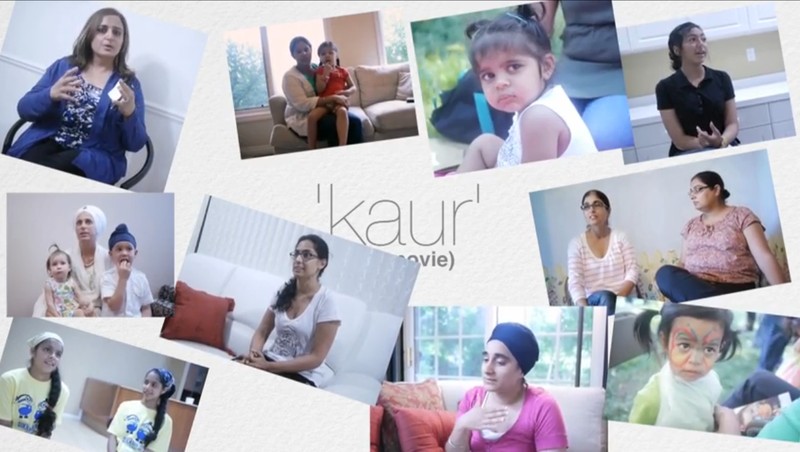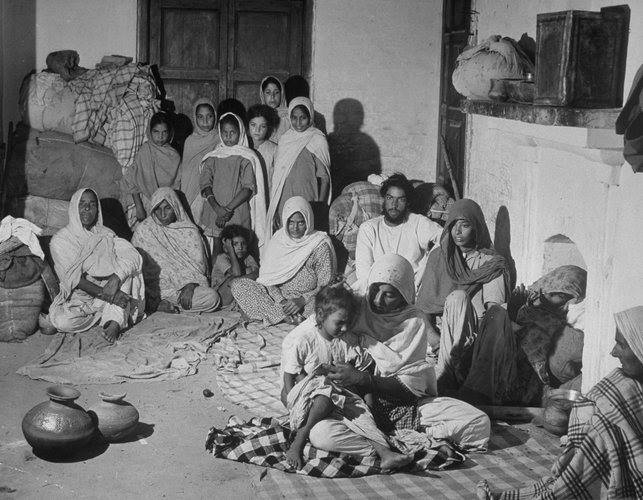Micro-Aggressions: The Invisible Bully
Part 1: Introduction & Types of Micro-aggressions
A Sikh’s guide to dealing with subtle oppression experienced in elementary school to adulthood
This is the first post of a three-part series exploring subtle bullying called micro-aggressions.
- Part 1: Introduction & Types of Micro-aggressions
- Part 2: The Bully & The Victim
- Part 3: Dealing With It
Introduction:
For about 10 years of my life, starting in 4th or 5th grade and going through high school, I felt like I didn’t belong; I felt excluded and out of place. School was a semi-hostile place for me. I wasn’t beat up or physically hurt. I had friends, and was well liked by my teachers, but for some reason I still felt bullied by the “cool clique.” I felt there were girls who were mean to me, but I couldn’t pin-point what they did or why I felt like that.
Up until recently, I always thought I was reading into people’s actions as being mean, racists, or religionist. I thought it was all in my head and I perceived situations incorrectly. That was until I learned about micro-aggressions. It all made sense to me after I read about them.
Kaurs (and Singhs), if you feel like a group of cliquey people are being mean to you, but you can’t express specifically why or how…they might be engaging in micro-aggressions.
What are Micro-aggressions?
A micro-aggression is exactly what its name states, “micro” = small and “aggression” = hostility: small hostilities.
“To be clear, the ‘micro’ in microaggression doesn’t mean that these acts can’t have big, life-changing impacts. They can,” writes NPR reporter Andrew Limbong. “Microaggressions are defined as the everyday, subtle, intentional — and oftentimes unintentional — interactions or behaviors that communicate some sort of bias toward historically marginalized groups. The difference between microaggressions and overt discrimination or macroaggressions, is that people who commit microagressions might not even be aware of them.”
Micro-aggressions are demeaning implications and other, subtle insults against minorities. It could be verbal or non-verbal “put-downs.” These actions are so subtle that often times the “bully” doesn’t consciously know that she is behaving in a mean way and the “receiver” can’t exactly identify what behavior is making her uncomfortable.
Three Main Types of Micro-aggressions
Once you know the types of micro-aggressions that exist, you’ll learn to identify them and you’ll begin to notice them in your everyday life more often. Ultimately, by observing them you can also learn to stop them.
1. Micro-assaults are conscious and deliberate discriminatory insults. They are obvious, for example displaying swastikas or calling someone the “n” word, (Source 1). If someone calls a sardar or sardarni a “Towelhead!” or a Kaur, “Gorilla girl!” for not shaving, those are micro-assaults. They could be nonverbal too, perhaps girls glare at a Kaur in the locker room or whisper about her. A micro-assault is, “An explicit….attack meant to hurt the intended victim through name calling, avoidant behavior, or purposeful discriminatory actions,” (Source 2).
2. Micro-insults are any communication that is rude or insensitive and demeaning about a person’s racial heritage or identity (being Punjabi or Sikh) (Source 2). For example, if a Kaur wears a suit to school someone may rudely ask, “Do your people always dress like THAT?” or if you get into a conversation about hair, someone might say, “I think Sikhs are too obsessed with hair. It’s gross. ”
Another instance of a micro-insult is one I faced in college. I was once asked, “How did you get into this school?” implying that I may have gotten in through an affirmative action or quota system. These comments convey insensitivity about Punjabi ethnicity and the Sikh heritage. In such instances, the “bully” places herself on a self-constructed pedestal above the “receiver.”
3. Micro-invalidations are communications that exclude, negate, or nullify someone’s feelings, thoughts, or experiences, (Source 2). For example asking you, “Where are you from? No, really! Not America, where are you REALLY from?” This conveys the message that the Sikh is a perpetual foreigner in her own land, (Source 1).
Why am I writing about this topic?
“Micro-aggressions hold their power because they are invisible, and therefore they don’t allow the bullies to see that their actions and attitudes may be discriminatory. Therein lays the dilemma. The person of color is left to question what actually happened. The result is confusion, anger and an overall draining of energy,” (Source 1).
I hope to make the invisible, visible through this article. Once we can identify the subtle discrimination that occurs against Sikhs or South Asians, we can address them.
David Zhou spearheads the Micro-aggression Project and similar to him, I believe it is, “…important to show that both marginalization and identity consciousness do not come from thin air; they are formed from structures of power and privilege that are both very personal and hard to see. The concept of micro-aggressions makes them a lot more tangible and less abstract,” (Source 3). Once micro-aggressions have a “name,” we can work to stop them. Furthermore, there needs to be a resource for those Sikhs who aren’t physically bullied, but are still marginalized.
Other types of Micro-aggressions
Gender micro-insults are overt sexism. For example, men refusing to wash dishes because they believe it’s “woman’s work,” or displaying nude pin ups of women at work, or making unwanted sexual advances towards another person, (Source 2). A small and subtle example would be calling a group of males “men,” but a group of females “girls.” Assumptions of inferiority, gender roles, sexist jokes, or denial of sexism, are all examples.
Kaurs, have you ever been assertive and been called a “bitch,” while your male counterpart is called a “confident leader?” That’s a gender micro-aggression. The hidden message here is that women should be passive and allow men to be the decision makers, (Source 4).
Or have you experienced this? Dr. Kaur is wearing a stethoscope but she is mistaken for a nurse. The hidden message here is that women should occupy nurturing and not decision-making roles or that women are less capable than men, (Source 4).
A fairly common form of gender micro-aggressions are whistles or catcalls made by men as a woman walks down the street or telling the woman to “Smile, gorgeous!” In this case, the hidden message is women’s bodies/appearance is for the enjoyment of men: women are sex objects, (Source 4).
Religious micro-aggressions:
There are very few studies that focus on religious micro-aggressions, though many have written on the larger topics of Islamaphobia and anti-Semitism. Some examples of religious micro-aggressions may include:
- Pathology of non-Christianity: For example “You’re Sikh, you’re not Christian therefore you’re evil or immoral.” Another example, which my brother experience in middle school, “You’re not Christian so, you’re going to hell.”
- Assumption of Christianity: This is the presumption of strangers that one is a Christian. It can be observed when someone tells you, “Merry Christmas!” or the fact that everyone gets Christian holidays off of school or work.
- Assumptions of religious stereotypes: This is when people assume things about you based on your religion. For example telling a Sikh that, “You must know about chakras and yoga. You must be an expert on spirituality! Can you help me pick out some mala beads?” Simply because they wearsa turban.
- Racial: Other forms of micro-aggressions are racial in form: questioning the existence of racial-cultural issues, making stereotypic assumptions, and being culturally insensitive. For simplicity’s sake I’m going to throw religion into this category. Even though Sikhi is not a race, many of the characteristics of racial micro-aggressions can be applied to religious discrimination.
Types of Racial Micro-Aggressions include:
- Colorblindness: “I don’t think of you as brown. You are just a person.”
- The denial of personal bias: “I’m not religionist or sexist. I even have Sikh friends and brown friends.”
- The minimization of racial-cultural issues: “Just because you (a brown Sikh) feel alone in this group of white Christians doesn’t mean that there’s a religious or race issue involved,” (Source 2).
Have you ever been in a classroom discussion about race or religion and everyone looks to you for answers? This used to make me uncomfortable and apparently it makes many other minority students awkward too. “Students report that they do not want to be looked to as experts on race-related topics, and that they feel hindered in discussions in which others are overly worried about being perceived as being racist,” (Source 1). This, too, is a subtle type of oppression.
Here are some other forms of racial/religious micro-aggressions that you might be able to relate to:
- “Your English is really good!” One doesn’t hear a white person get asked this question because it is assumed she is American. Hidden message: Brown people are perceived as perpetual aliens in their own country and not “real Americans.”
- People cross the street or clutch their belongs, or keep their kids close when someone in a dastar walks by. Hidden message: Turbaned people are up to no good and are a threat.
- A police officer stops a turbaned driver for no apparent reason but to subtly check his/her driver’s license to determine immigration status. Hidden message: Sikhs in turbans are illegal aliens or terrorists.
In an 8-year study at the Teachers College of Columbia University, research found that, “…these racial micro-aggressions may on the surface, appear like a compliment or seem quite innocent and harmless, but nevertheless, they contain what we call demeaning meta-communications or hidden messages, (Source 1).
Read Part 2: The Bully & The Victim
By Lakhpreet Kaur
Sources
- http://www.psychologytoday.com/blog/microaggressions-in-everyday-life/201010/racial-microaggressions-in-everyday-life
- http://en.wikipedia.org/wiki/Microaggression
- http://bitchmagazine.org/post/microaggressions-because-it-IS-a-big-deal
- http://www.psychologytoday.com/blog/microaggressions-in-everyday-life/201011/microaggressions-more-just-race
- http://www.cesa1.k12.wi.us/cms_files/resources/microagressions_article.pdf
- http://www.psychologytoday.com/blog/microaggressions-in-everyday-life/201101/bullying-microaggressions
- http://teenstalkcultures.com/2013/02/15/what-are-microaggressions-can-i-influence-them/
- http://works.bepress.com/stacy_harwood/8/
- http://academiccommons.columbia.edu/catalog/ac:150381
- http://www.cesa1.k12.wi.us/cms_files/resources/microagressions_article.pdf





3 Comments
Ravkiran Kaur
08/20/2014 at 9:42 amHi Lakhpreet didi! This is somewhat similar to one of the micro aggressions in the article. For sixth grade in Texas, they aren’t any honors classes so you have to stay in regular level. In this class, I am pretty much the only person that pays attention in class. When we do worksheets, our teacher makes us do it with partners. Everybody runs up to my seat and asks just because I am brown. (everybody thinks asians and indians are the smartest, which usually is true.) I have noticed over time that the person who is my partner doesn’t help me look in the book; all she does is copy off of mine. She is taking advantage of me. So next, I plan for that to change.
Kaur Life
08/20/2014 at 10:33 pmGlad you’re gonna try and challenge that!
My Sangat Bullies Me - Kaur Life
11/12/2018 at 1:58 pm[…] what its name states, “micro” = small and “aggression” = hostility: small hostilities. Micro-aggressions are demeaning implications and subtle insults. It could be verbal or non-verbal “put-downs.” […]